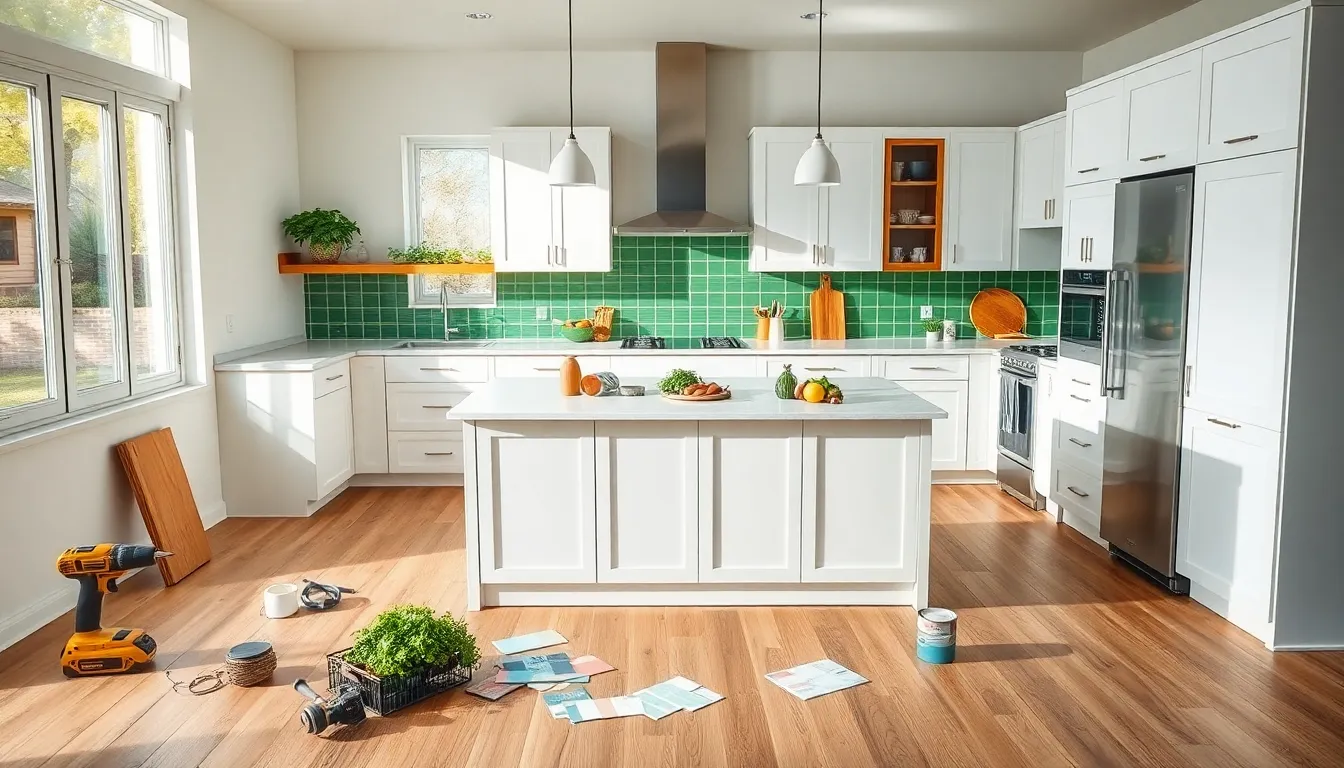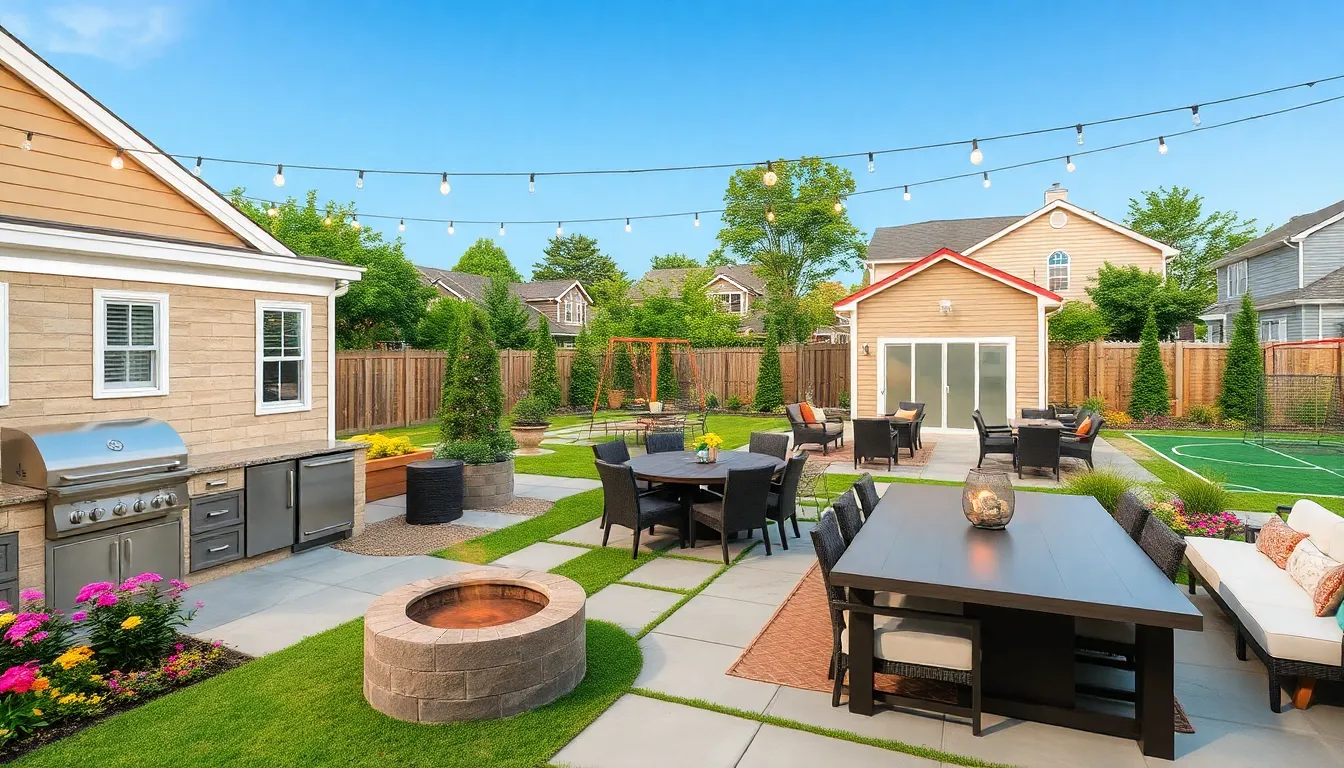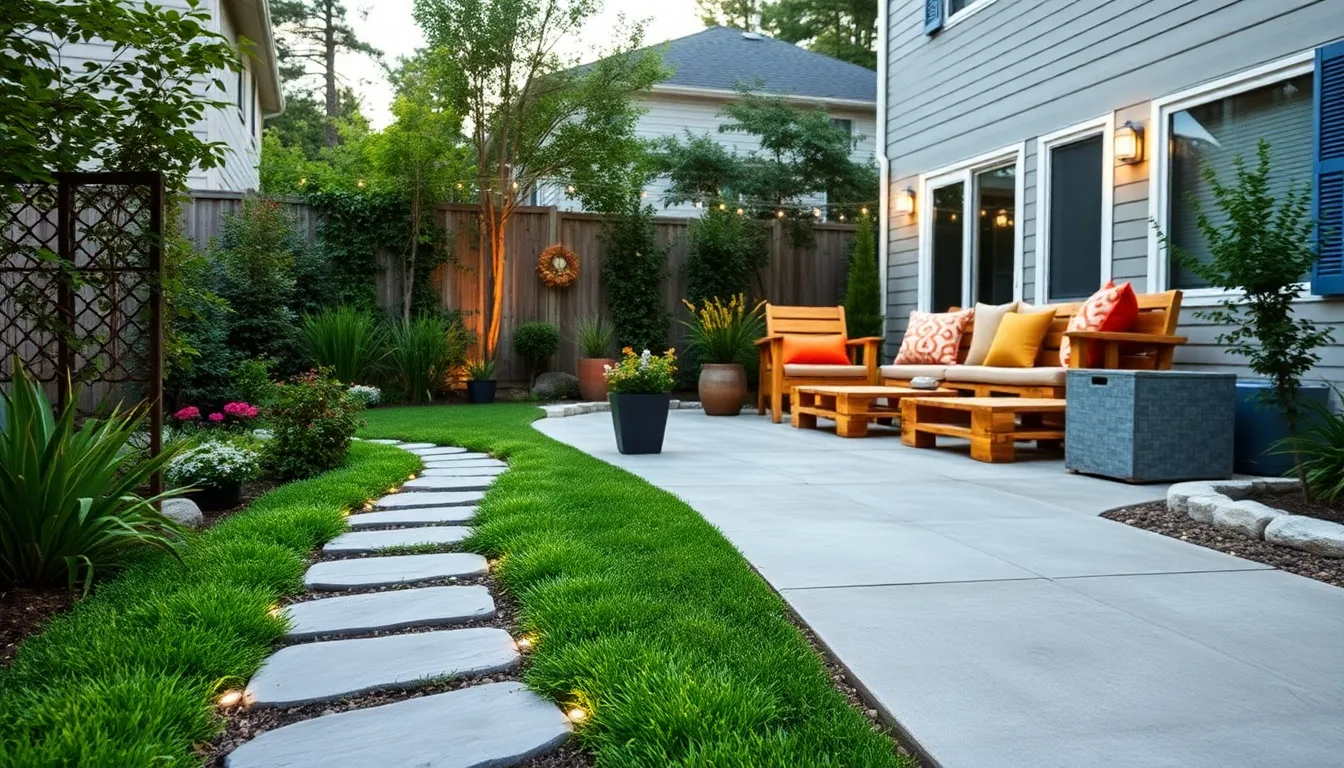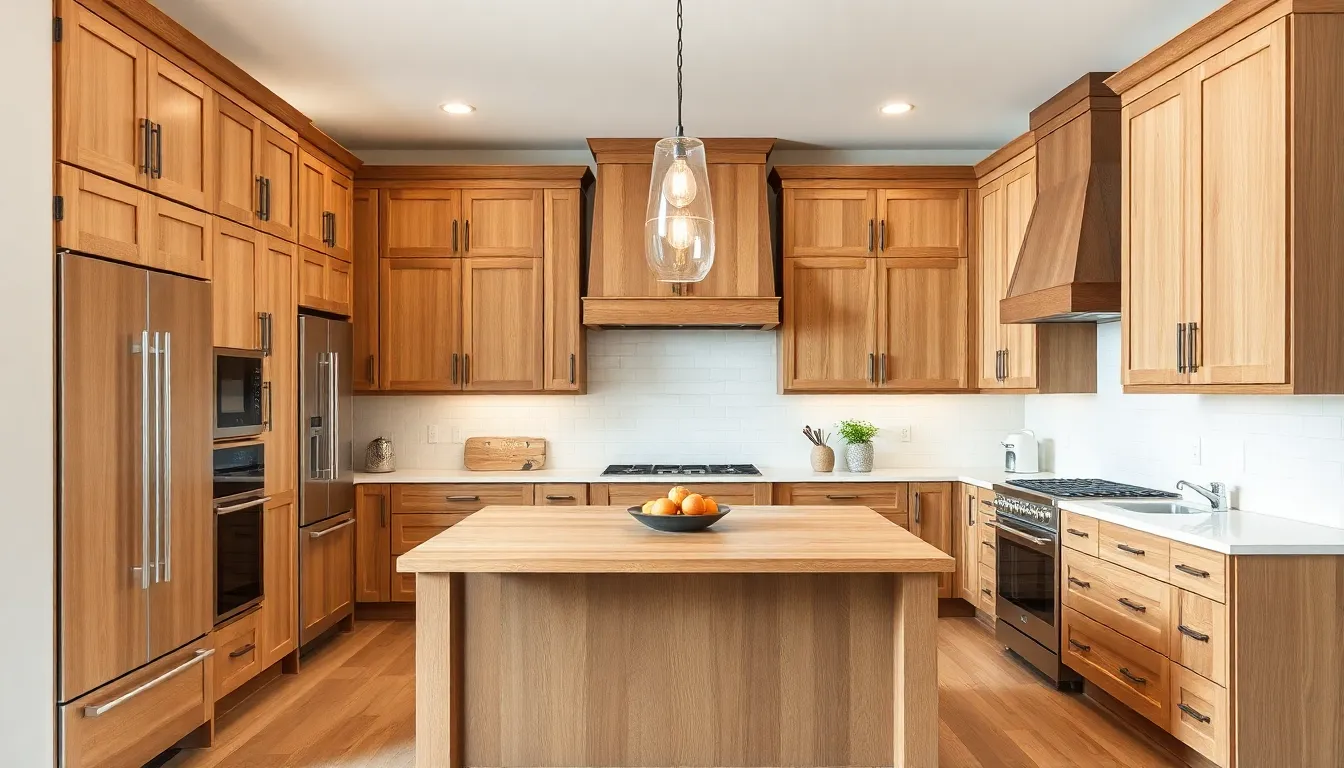Table of Contents
ToggleEver stumbled upon a kitchen that looks like it’s stuck in a time capsule? You’re not alone. Fixer upper kitchens often come with tons of potential, and a bit of chaos. Whether it’s the avocado green appliances or peeling wallpaper, these spaces can feel like a treasure hunt. This journey to revamping a kitchen can not only turn it into a culinary oasis but also elevate the entire home’s appeal. Ready to uncover those hidden gems? Let’s jump into the world of fixer upper kitchens with some style, a splash of budget tips, and a dash of humor.
Understanding the Fixer Upper Concept
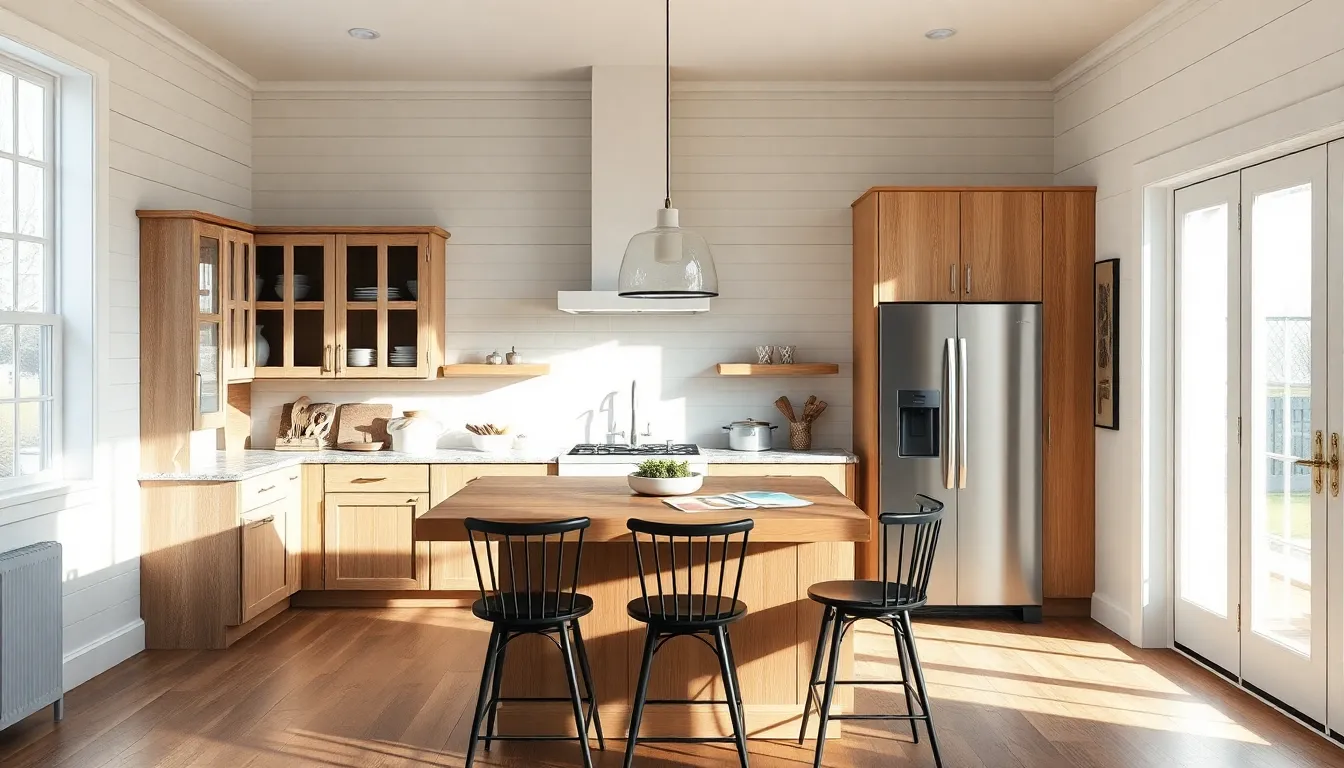
The term ‘fixer upper’ isn’t just a buzzword: it’s a real estate classification that promises a project for those with a vision. Typically, these homes are sold at a discount to reflect necessary repairs and renovations. When it comes to kitchens, this can mean anything from outdated decor to a complete overhaul of the plumbing. Fixer upper kitchens can be a canvas for creativity, championing the idea that what lies beneath the surface can often be more stunning than what first meets the eye.
Also, the rise of home renovation shows has made fixer upper properties incredibly appealing. Many homeowners see the potential in transforming these spaces into stylish havens, a far cry from their previous iterations. Understanding the concept is key: no one buys a fixer upper without an adventurous spirit and a plan for picking out the pieces that need fixing.
Key Features of A Fixer Upper Kitchen
What should one expect when stepping into a fixer upper kitchen? Several hallmarks often define these spaces. First up are the cabinets. Maybe they’ve seen better days or maybe they just weren’t built for today’s needs. Often, they lack modern storage solutions or trendy aesthetics. Next, think about flooring. Worn linoleum or mismatched tiles can clash more than a poorly selected paint color.
Then there’s the layout. Older kitchens may have a layout that was fashionable in the 1970s but now feels cramped and inefficient. Don’t forget about the appliances, which may resemble relics from bygone days. Let’s not even get started on the countertops, which might be as outdated as your high school prom gown. How about lighting? Poorly placed fixtures may leave dark corners lurking in the shadows.
The key features of a fixer upper kitchen are steeped in both charm and challenge. Here lies the crux: these features can be the very elements that inspire a transformation.
Design Ideas for Transforming Your Kitchen
When it comes to crafting a stunning kitchen from a fixer upper disaster, the design ideas are virtually limitless. Start with an open-concept layout. Is there a wall preventing the flow of culinary creativity? Knocking it down can create an inviting space where family and friends can gather while meals are prepped.
Next, consider fresh cabinetry. Painting old cabinets a trendy color or replacing them entirely can be a game changer. Think about using reclaimed wood for open shelves. This rustic touch adds character while also being environmentally friendly.
Don’t shy away from bold backsplashes either, subway tiles or vibrant patterns can play a significant role in revamping the overall vibe. Depending on the kitchen’s size, it can be beneficial to install an island. This not only provides extra counter space but also becomes a focal point. Lighting can make or break the atmosphere, so introducing pendant lights or under-cabinet lighting can brighten things up considerably. Finally, accessorize. Add personality with unique kitchen tools and statement decor that reflect personal taste.
Budgeting for Your Kitchen Renovation
Setting a budget for a kitchen renovation is a bit like going grocery shopping on an empty stomach: it’s easy to overspend if you don’t have a plan. Start with a detailed breakdown of potential costs. Components can vary significantly in price, from mid-range cabinetry to high-end appliances. Experts often recommend allocating specific portions of the budget: 30% for cabinets, 20% for appliances, 15% for countertops, and the rest spread across fixtures, flooring, and labor.
It’s crucial to leave a buffer for unexpected expenses. Often referred to as a contingency fund, this should be about 10-20% of the total budget. That leaky pipe can lead to repairs that may eat into those hard-saved dollars. If on a tight budget, don’t hesitate to consider DIY projects or sourcing second-hand materials. The more elements you can upcycle or repurpose, the more you’ll save.
Also, check local hardware stores for seasonal deals and sales on essential items. With the right planning, your budget can stretch further, allowing for adjustments along the way.
DIY vs. Professional Help
The age-old question arises: Should you do it yourself or hire the pros? It’s eventually about assessing both skills and budget. DIY can be extraordinarily satisfying as it adds personal touches to a remodel. For example, installing a backsplash or painting cabinets can be achievable even for novice renovators. Plus, there’s the undeniable joy in saying, “I did that.”
But, some renovations are better left to professionals. Extensive electrical work or plumbing issues should ideally be handled by licensed individuals, as mistakes can lead to costly consequences. Likewise, intricate carpentry or layout alterations may require specialized skills. Also, some homeowners find that they simply don’t have enough time to devote to a renovation. In such cases, hiring a contractor ensures the job gets done without compromising quality.
Essentially, finding the right balance between DIY projects and professional assistance is crucial. Understanding your limitations and being realistic about what you can handle will lead to a smoother renovation experience.
Common Challenges and Solutions
Renovating a fixer upper kitchen often presents its own unique challenges. One common issue is dealing with outdated plumbing or electrical systems that don’t meet modern standards. To tackle this, enlisting a qualified professional to assess and upgrade these components is essential. Don’t be afraid to ask questions to ensure code compliance.
Another challenge is managing time constraints. Renovating takes longer than anticipated due to unforeseen hiccups, which can be frustrating. To mitigate this, create a realistic timeline before you start and plan for some flexibility.
Budget overruns are also frequent, so staying organized and tracking each expense will help keep spending in check. Speaking of which, make use of apps or spreadsheets to stay on track. Finally, living in a construction zone can be taxing. Finding temporary solutions like setting up a portable kitchen can make the process more bearable. A successful renovation requires strategies, patience, and the willingness to adapt to challenges.

